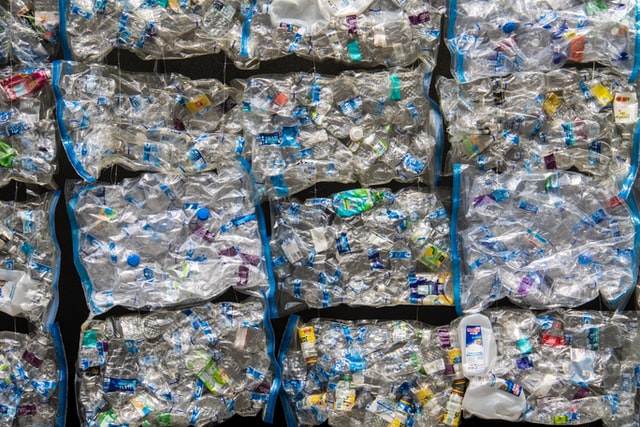
EU leaders have introduced a levy on plastic waste starting January 2021 which will contribute towards the EU’s €750bn Covid-19 recovery package and its overall €1tn 2021 to 2027 budget. […] The levy will see non-recycled plastic packaging waste calculated at a call rate of €0.80 per kilogram.
Jessica Page, in: Packaging Gateway, 22nd July 2020
The cat is – long-time coming – finally left out of the bag: while drawing up a Covid19 recovery package, EU legislators have decided to introduce a levy on non-recycled plastic as per 1st of January 2020:
To quote the relevant section from the Covid19 agreement between EU member states:“As a first step, a new own resource will be introduced and apply as of 1 January 2021 composed of a share of revenues from a national contribution calculated on the weight of non-recycled plastic packaging waste with a call rate of EUR 0.80 per kilogram with a mechanism to avoid excessively regressive impact on national contributions” (Source p. 64, point 146).
Reading through the text, three points offer a considerable surprise:
- The short notice of the announcement: with less than 6 months to go until coming into force this may very well be one of the EU’s more speedily implementation decisions. After all: EU mills tend to work an a rather comfortable rate.
- The wording: ‘non-recycled’ has been used instead of ‘non-recyclable’. In other words: this time around the EU puts the spotlight onto the on-the-ground reality where many plastics technically can be recycled, but factually do not find their way into a second (recycled) life.
- The focus on packaging: The legislators have clearly understood that there applications where plastic is a key product ‘ingredient’, and does not play the role of packaging. While such plastic does fall under the plastics EPR (see later in this article), the levy does purposely exclude a tax on such application of plastic.

As can be seen from the rather drastically negative industry reactions (all including some exaggerations; samples of which are available here, here, here, or here), it is evident that few expected this to happen this quick, this clear cut, and with this considerable a price tag attached.
That the plastics industry is not happy about having to own up their inherent single-use characteristics of the vast majority of their product is clear. So far they considered their job done by offering recyclable or possibly bio-degradable plug-and-play alternatives to run-of-the-mill products. All the while stopping short of thinking about systemic implications and requirements. In this way they have been kicking the bucket further down the value chain towards the end consumer, or possibly worse: the governments of individual countries, for at least a decade or so.
At the same time, and as can be read between the lines of the above public statements: the conversation is not new. It started – at the latest – in the up run to the ban of Single Use Plastics (SUPs). And it was on the table nearly every single time End Producer Responsibility Schemes (EPR) was being discussed by legislators.
As it happens, EPR schemes exist across Europe since well over 20 years for electronics, for textiles from 2023 (in France already fora fair few years however), for tobacco filters (enacted 2019) and have been enacted by the EU also for plastics back in 2017.
And yet, many, many plastics remain without actual significant progress in terms of collection rates on the one hand, and recycling rates on the other. That the EU would crack down rather sooner than late on this development, was therefore entirely plausible, even if the speed might not have been foreseeable to this extent.
What does this development therefore mean for corporate boards, the role they (should have) play(d) and their responsibilities? How come it seems that – sadly and very unfortunately – legislators are driving the industry R&D agenda? Here a few questions for boards to ask their CEOs to get to the bottom of this. Not just for plastics, but indeed for any product that depends on ingredients that embody a questionable environmental track record:

Oversight → R&D & Trend related:
Are there trend blind spots that could impact product viability?
Most R&D efforts are strictly focused on the principle product or the principle product lines. I.e. those that a company subjectively sees as their ‘product(s) on the market’. Such a very narrow focus sometimes overlooks what is really needed to make the product viable for and palatable to the customer base. Bridging this gap are ‘service ingredients’.
- Which of the service ingredients are critical for the viability of the main product for the customer? What R&D is going on to innovate in that area?
- What if some service ingredients were (economically, logistically, legally) no longer viable?
- What if that was: Tomorrow? In 6 month? In 12 months? What are the costs associated with each of these scenarios?
Oversight → Costing related:
What are the hidden costs, and who is paying for them?
- Review the fundaments of product costing:
- How is total cost of product defined and then calculated?
- Does it account for costs carried by 3rd parties (as of yet; i.e. ‘externalities’)?
- If not, why not? And if so, in what way exactly?
- Is the total product cost only constraint to the actual product? Or does the calculation also account for the ‘stuff around it’ (the service ingredients) that is needed for the customers to buy it? Things like: packaging, shipping, testing, sampling, ….
- What is the full list of ‘service ingredients’? What is the full cost they add to the product?
- Repeat the consideration as under Point 1 above for the combination package of product PLUS service ingredients.
- Looking at the entire product (main product plus service ingredients): which ones are at risk of being legislated on, and in what way? Why? Over what time frame?
- What would would happen if any of these would be banned tomorrow?
- Be costed at X USD/kgs generated waste at delivery to the customer?
- Who would pay for that extra cost? Why?
Compliance → Legislative developments:
What discussions are happening on legislative level that would impact product delivery and R&D critically?
In the above cited example of non-recyclable plastic, such conversations will definitely take place about modalities of payment (who pays to whom via what channel). .
- Is the company aware of what conversations at legislative level could impact their product delivery, why, when, and in what way?
- Have there been scenarios thought through on how to deal with those developments? Have these been costed?
- Have alternative solutions been considered that could require R&D or other investment?
- Which of these scenarios could require (cross-)industry collaboration? With whom? What would be the mutual benefit and win-win?

Strategy → Timeline:
From all the above – what are the critical timelines that drive the developments?
It is a fairly bland truth that short time lines are excessive cost drivers. In the above cited example of non-recyclable plastic, early operationalisation will likely result in cost savings as standard processes are impacted less severely. Hence:
- How do timelines from any of the above impact
- cost
- R&D
- viability
- market demand
- cost of compliance
- competitive advantage?
Further learning and more details on the decision:
- Synthesis article by Jessica Page “EU introduces plastic waste tax as part of Covid-19 recovery plan”
- Insight Article by Eline Schaart: “France, Germany set to pay the most under EU plastics tax: Governments will be charged per kilogram of non-recycled plastic packaging.”
- Original Source: Conclusions of the special meeting of the European Council (17, 18, 19, 20 and 21 July 2020), p. 64, point 146.
- Also interesting: point 147, on the prospects of a carbon border adjustment mechanism and a digital levy, to be introduced during first semester 2021.

